Astrophotography Images
Pics of sky with an SLR, 2015-
I am doing some further messing around with the SLR, and with a lot of assistance from my brother.
I took some very interesting images of the Milky Way while out camping. Some exceptional pics were taken out in the Victorian Outback, at the Pink Lakes in the majestic Sunset Country. Further pics were taken at Johanna Beach (Feb 2015) as well as elsewhere, at Lake Eildon. One simply turns up the ISO. Take approximately 15 second exposures. 10 second exposures look like a bright night sky. 20 to 30 second exposures, the stars go from white/blue to golden yellow all over.
Pink Lakes, Victorian Outback
Along with the Emus and Red Kangaroos, are lots of nice stars!
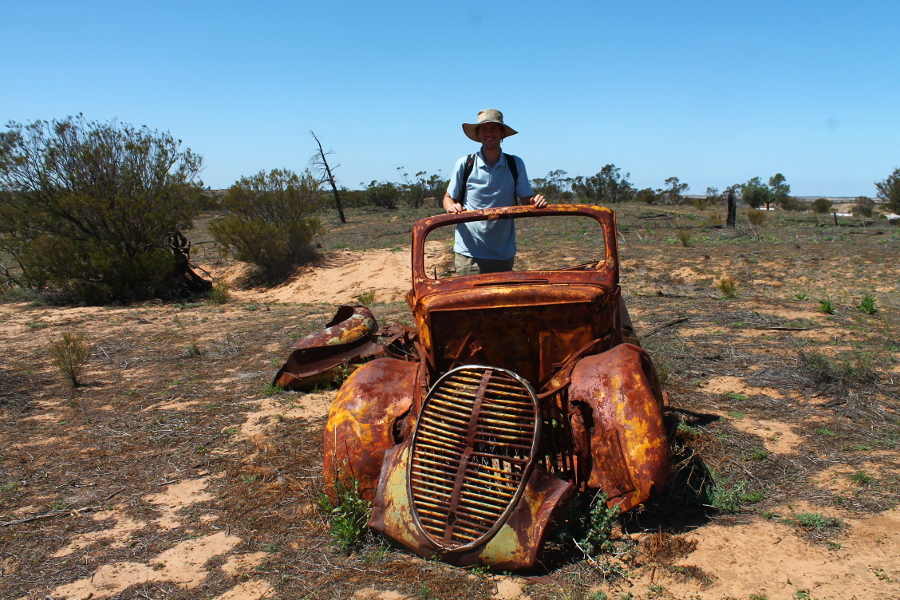
This is the car I used while in the outback. I just listed it online.
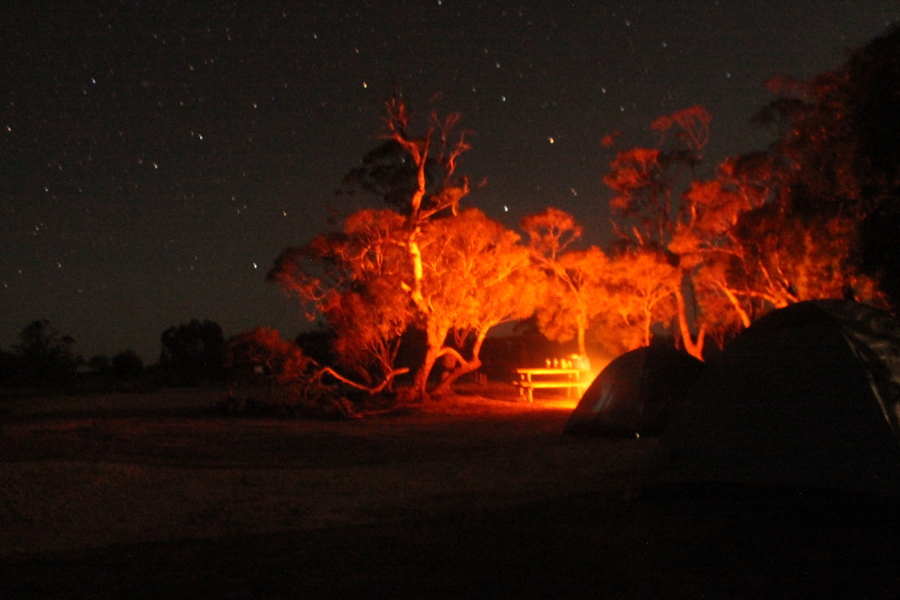
Nice Southern Milky Way.
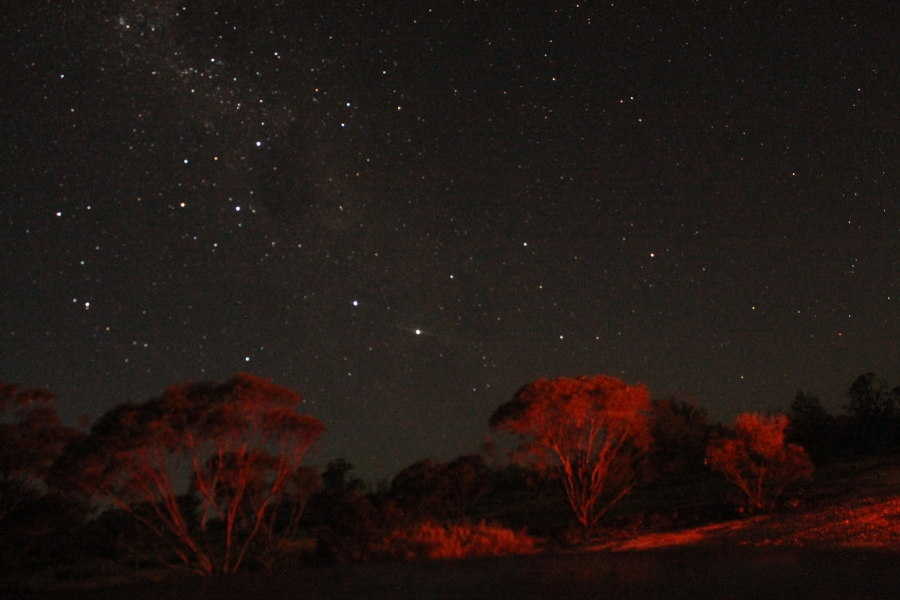
Nice!
Johanna Beach, Feb 2015
This is a nice rural beach. It's a fantastic place to camp, far from the city.

No scope required, just a camera on long exposures of about 15 seconds.

Look at the dark nebulae! The view would have gotten much darker, only the moon began to come up! Looking up about 3 or 4 southern-cross lengths above that constellation, we see a small clump known as the Southern Pleiades. Someone in the astronomy club says this name exposes Northern-Hemisphere chauvanism, since the south also has the regular pleiades, and they should really be called the Five of Diamonds.
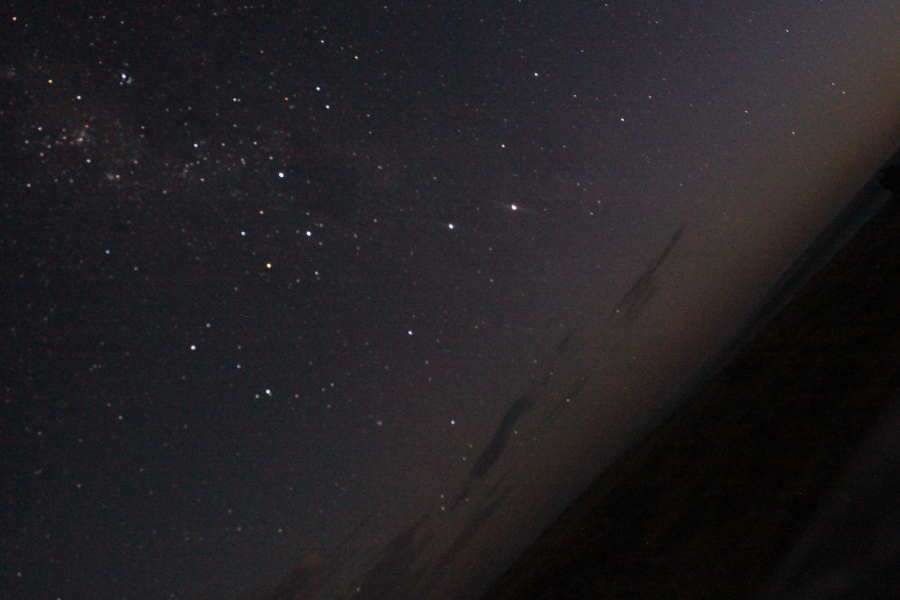
Is this the Zodiacal Light? I am unaquainted with it, really. Anyway this is the southern cross with the coal sack (dark) nebula to the right. Also... looking over the Southern Ocean towards Antarctica! (hehe)
Eildon
Not as far from Melb this time but still rather good! I had had a lot of practice by now so my technique was getting rather good. I wanted to expose it as much as possible, max ISO, without blurring the stars too much, to see what could be seen. Quite a lot is visible to the camera which the eye cannot see, as shall now be demonstrated!
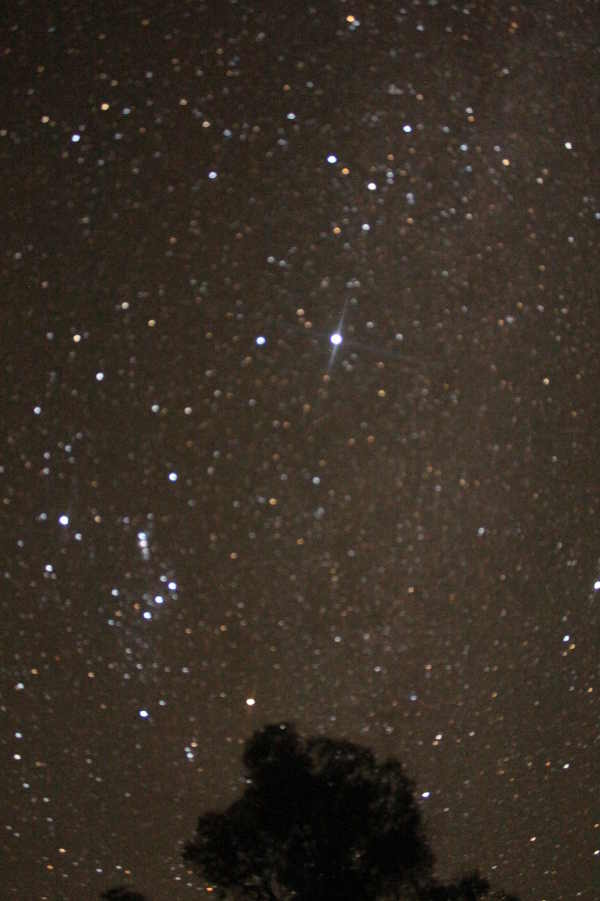
Orion down there on the bottom left!
The technique requires simply placing the SLR on the car or any steady object and simply pressing the button. Obviously a shutter release would be a good idea and a half, to steady the camera, but how many people remember to take that camping with them?

On this slightly overexposed image, we see the strange spiralling arms of the Large Magellenic Cloud, to the right. This is allegedly an irregular galaxy, yet I see structure here.
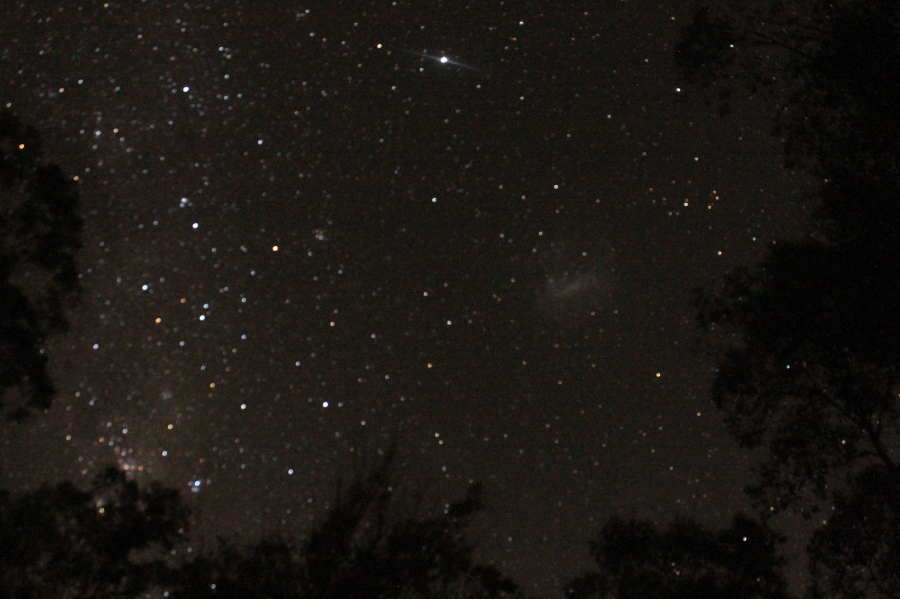
Here is another fascinating image
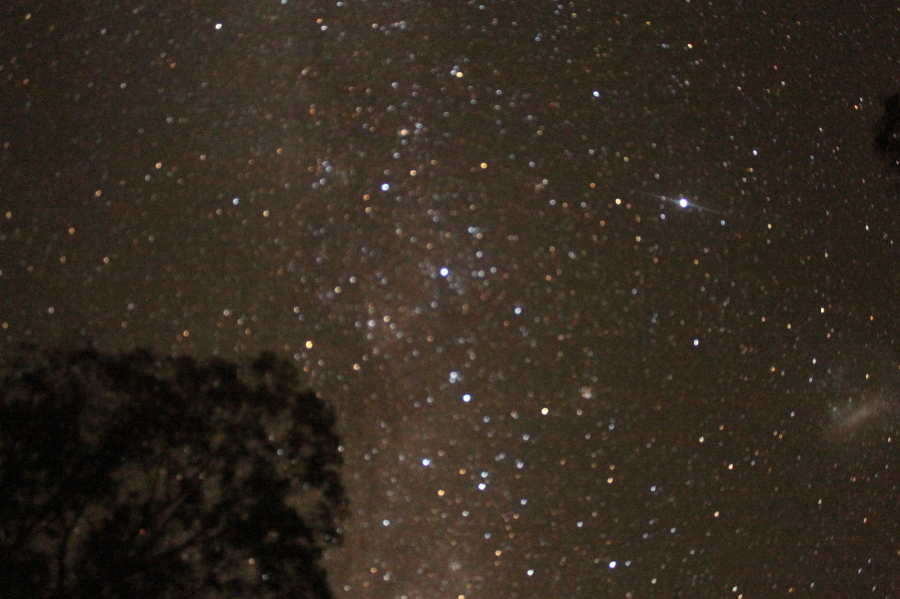
More overexposure.
Incredible overexposure allows us to see the dark band along the central axis. Cosmic dust, which is possible bacteria, if we subscribe to Hoyle's theories anyway.
The Total Lunar Eclipse at Prime Focus!
On my previous page, of earlier images of the moon, you may have noticed eclipse photos which were taken simply with a telephoto lens. Prime focus with an SLR involves situating the camera on the scope without a lens, with an adaptor. Naturally this would provide a view field view, and is unsuited therefore to taking snaps of tiny-disk planets. It is suitable however for the moon.
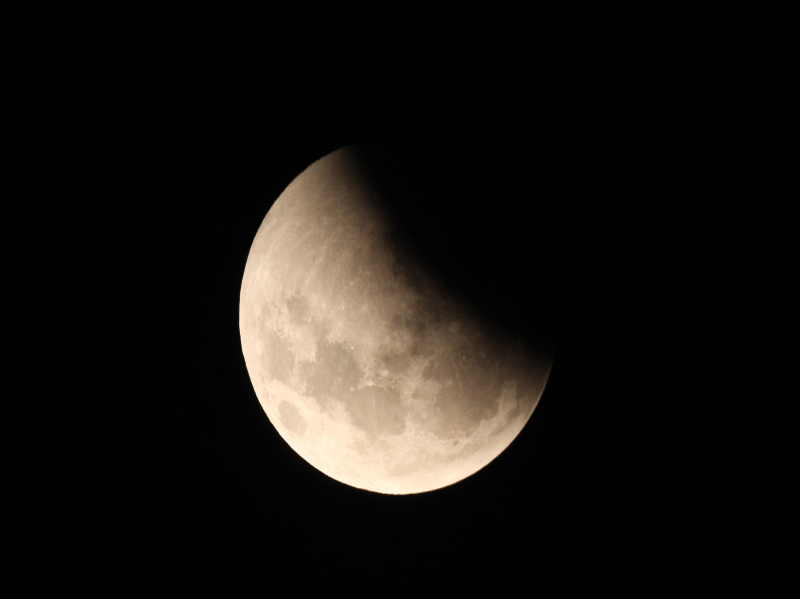
The start of the ecilipse... a creepy shadow across the moon.

The continuation of the eclipse, on a higher exposure. The moon appears red in the eclipsed part.
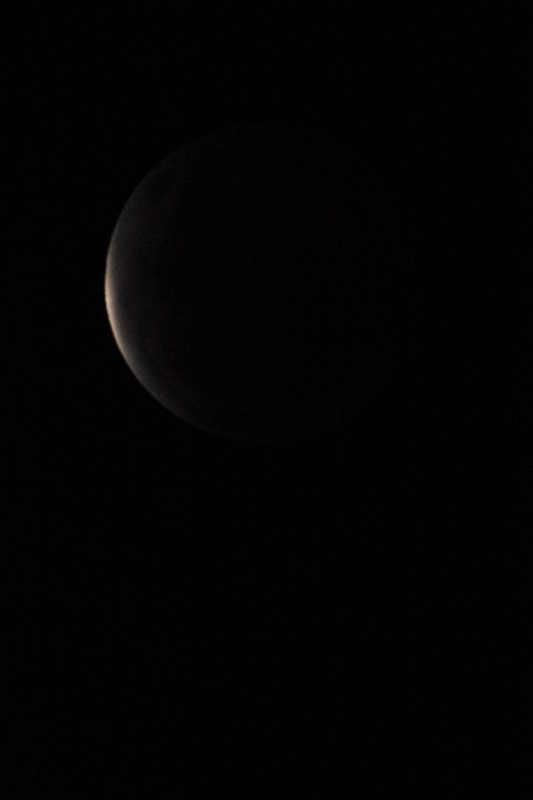
On a lower exposure the total eclipse looks like this. The human eye however sees a red ball, as below and above.

A nice exposure showing the colours the human eye picks up, though a little lighter. The moon is here coming out of eclipse on the lower limb, with an increased light level there. It merely grazed the umbra of the Earth's shadow, coming out of eclipse in almost the same direction as it exited, the eclipse thus appearing to `reverse.' In a more full eclipse light would presumable start on the opposite side.
Here are some pics of the recent lunar eclipse, a glorious total Eclipse, occuring in April 2015. Me and my bro simply performed prime focus shots with the scope, and the results were excellent!
Imaging Jupiter
I have done a great deal of planetary sketching over the past decade. Sketching really does train the eye to see, but it also belongs in the 20th century. I am moving on from it, as imaging is becoming easier and easier, with more and more online tutorials available. Tutorials on youtube are an enormous help also. The advances that amateurs have made in the past few years are extraordinary. All amateurs can now potentially take professional-quality images with equipment which does not have to cost the Earth!
You are not supposed to use an SLR (designed for wide view) for planetary imaging (narrow field) but I did anyway, lacking a webcam (the correct method) so here are the results, with the Dobsonian!
In late April, 2015, Jupiter is at nice meridian in the evenings (the highest point it reaches in the sky) which makes for good seeing. I tried some astrophotography, simply with the SLR pointed afocally, (in my hands) down the lens. Now, this is rather tricky! I do not have a webcam (yet) but will have one shortly, hopefully. Webcams have a tiny lens so are excellent for planets. What you want is a very narrow field of view which an SLR does not provide. All I did was simply use the standard-size EOS SLR lens, and a 10mm plossl eyepiece on the f/5 yeilding 100x mag. I focused the scope and focused it again by looking through the camera eyepiece, setting the camera to just under infinity. Then one simply takes a few snaps and puts them together in registax, increase the contrast and brightness. I then used Gimp to do a Guassian blur, deconstruct into layers, adjust the curve, reconstruct, and it's basically done. This is the best I have been able to do with the SLR so far.
I have tried with my other lenses, but it is really hard! I tried with a wide-view RINI as well as with a tinier plossl. It really did not work very well. As for the camera settings, one simply has to play with them. Depending on the lens, and the chosen zoom, I found myself using maximum ISO (sensitivity) of 6400, and exposures of about 1/100 a second, but it really depends, and you will have to play with it quite a lot until see you see a nice planet with clear band definition on the screen!

Here is one of four images of Jupiter I took in fantastic seeing. It's all zoomed in.

Here is the planet post Registax
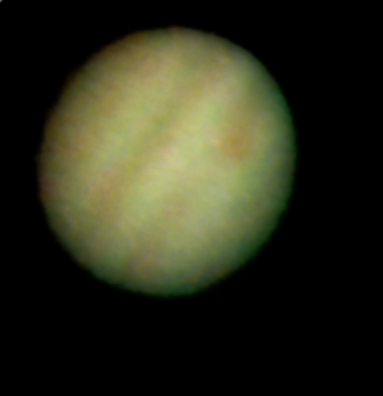
Here is the planet post GIMP. I like it! An interesting amount of detail is on the verge of coming through!
There is a problem with using JPEG images as there is a strange JPEG artefact which gets created. Here is one I did the procedure on a few days ago, with the Red Spot turned away. Naturally this is primarily due to lack of experience. It will take years to get all this right! I took many more images but it is rather silly. Hopefully I am going to get a nice webcam soon, with a 5x barlow to go with it, to get some truly sensational images! I am putting these not-very-good images here as a memory of what once was, hopefully, with a bit of info on how I improved the technique!

Frustratingly, an star-like artefact sometimes appears when using JPEG! Another post-GIMP image looking at another side of the planet, a few days later.
If you like or dislike this page, or found it helpful/unhelpful, please drop me a line by email!
Powered by FolderCMS

















